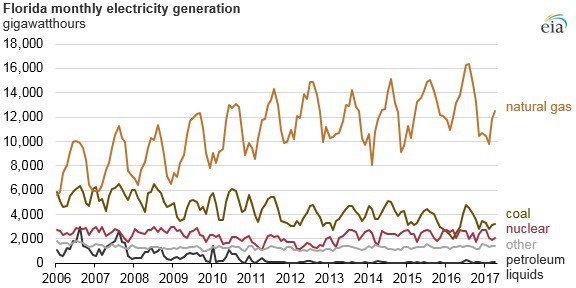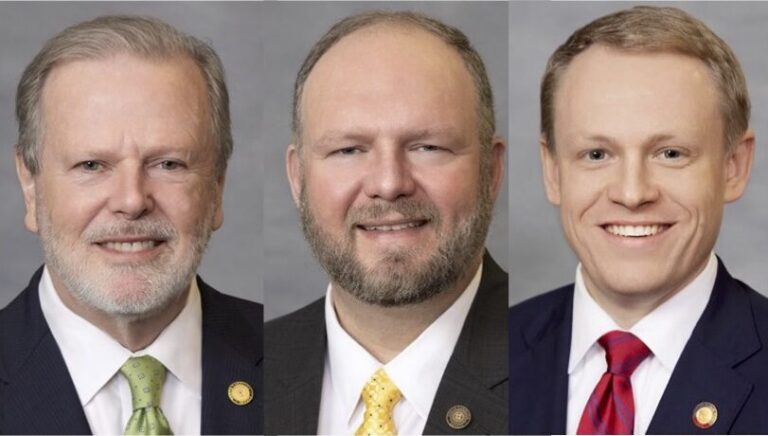Candidates for Florida Public Service Commission Echo Utility Industry Solar Talking Points
Candidates for three open seats on the Florida Public Service Commission revealed a range of views – some of which are not well supported by facts – on solar power during interviews for the job.
The Florida Public Service Nominating Council interviewed and voted on finalists for the three seats on August 17, 2017. During the interview, Representative Mike La Rosa, chair of the nominating council, asked several of the candidates for their views on renewable energy. The answers ranged from “we need to embrace solar” to the notion that solar has “problems integrating” into the grid.
La Rosa [25:28]: “What do you feel is the role renewable energy has in our electric grid in the future?”
Commissioner Art Graham, who interviewed to remain in his seat after his term expires at the end of the year, responded by talking about biomass and landfill methane gas utilization, but also said “there’s definitely a place for solar … it has doubled every two years over the last four to six years, so it’s going to be more and more of an impact as we move forward.”
Former Mayor Conrad brought up the role biomass plays, and also said, “renewables is the way we got to go. We got to clean up our environment.” [1:01:10]
But he then said, “Most of [renewables] are not cost-effective, despite what the solar salespeople will want to tell you, ‘You’re going to save money with solar.’ I don’t believe that’s true at this point, you may one day.”
Conrad also added, “I think there’s a lot of problems integrating renewables like solar because it doesn’t produce energy during the peak hour when you really need it. You’ve got to have something else there to backup the solar … then you’re shifting the cost of power to the other people who aren’t using solar … but definitely renewables are the way we have to go in the future.”
Conrad’s statement about problems with solar integration echo the views from the utilities in the state. But several other utilities and grid operators across the country were given a test of how to deal with the drop in solar energy generation when the eclipse occurred in August. Eric Schmitt, vice president of operations at California Independent System Operator (CAISO), which delivers 80% of the electricity in the state which has more solar energy capacity than every other state in the country combined, said, “Things went really, really well.” And David M. Hart, a professor and director of the Center for Science, Technology, and Innovation Policy at George Mason, told the Washington Post, “The event is another in a long list of examples that show that system operators are able to integrate the current level of renewables on the grid without sacrificing reliability.”
Furthermore, Patrick Lee, a Sempra Energy vice president for major project controls for the utility company recently said, “So installing a base load power plant is no longer your only option. You can now look at solar, wind and storage as alternatives, and still be able to manage the reliability of the grid. So that is the takeaway I would like you to have … But today my answer is: The technology has been resolved. How fast do you want to get to 100 percent? That can be done today.”
Conrad’s cost-shift argument also echoes the utility industry talking points. The most recent data from Lawrence Berkeley National Laboratory (LBNL) finds that a cost-shift doesn’t occur until you reach 10% penetration of electricity sales, and even then the impact is minimal. Florida does not have anywhere close to 10% distributed solar penetration. When distributed solar reaches 10% of electricity sales, the impacts would be either a cost or a benefit of around half a cent/kWh ($0.005/kWh). The figure below is from the LBNL report and it highlights the three states that it estimates will see this 10% penetration level by 2030 (Arizona, New Mexico, and Connecticut).

Anibal Taboas, a consultant from Illinois and former senior executive with the U.S. Department of Energy, responded to La Rosa’s question by saying the PSC should foster renewable technology such as tidal wave power, and said he believes small modular nuclear reactors are also a “renewable” energy technology that the PSC should advance. Taboas said later in his interview that he would also like to see more natural gas coming into the state.
While small nuclear reactors (SMRs) are carbon-free, they are not renewable – uranium is a nonrenewable resource. Additionally, SMRs is not cost-effective nor has the technology been adopted by the market. And while tidal wave power shows promise, it is not in widespread, unlike solar.
La Rosa asked a slightly different version of the question to Gary Clark, Deputy Secretary for Land and Recreation at the Florida Department of Environmental Protection and former Vice President of Member Services for the West Florida Electric Cooperative Association.
La Rosa [2:43:06]: “What challenges do you think our state faces when it comes to energy in the future?”
Clark said that Florida faces a number of challenges and started talking about grid reliability issues, particularly because of hurricanes.
Clark then said, “I think renewables play an important role in Florida’s energy future. However, they have to be balanced with economic soundness. Anything that we look at and add to Florida’s fuel diversity, Florida’s fuel portfolio, must be evaluated on that economic soundness. I think those are probably two key issues that we look at.”
It is no secret that natural gas has been a cheap source of electricity. However, Florida is increasingly reliant on natural gas for electricity. According to the U.S. Energy Information Administration, “Since the beginning of 2016, Florida has added 3.4 gigawatts (GW) of natural gas-fired electricity generating capacity, which is more than any other state. Another 3.9 GW of natural gas-fired capacity is planned to come online in Florida over the next six years, based on data reported to EIA by project developers.”

Florida Power & Light, the state’s largest investor-owned utility, issued its 10-year power plan in April. Its plan over the next decade is consistent in the fact that natural gas will remain at 70% in the utility’s fuel portfolio while solar increases from 0.5% to 4.2%.
A Union of Concerned Scientists report, “The Natural Gas Gamble,” calls for regulators and lawmakers to weigh the rewards of cheap natural gas carefully against the risks associated with gas, specifically its historical and continued price volatility. The authors write that “upward pressure on prices is likely to result from increases in demand for natural gas for electricity and other competing uses—including home heating, industrial production, and transportation.” The report further finds that these investments in gas, which forces ratepayers to be on the hook to pay for the gas investments for decades, could become stranded assets.
Joe Nipper, vice president of regulatory affairs at the American Public Power Association (APPA), said in a 2016 interview with UtilityDive, “Because policies change and other variables change, we may very well find ourselves a few decades down the road in a situation where in order to do the right thing at that point or meet policy objectives, we have some stranded natural gas assets … We certainly had that with coal and we’ve learned from that experience.”
Furthermore, the LBNL study also finds that if regulators did want to address price impacts on customers, they would do better to limit the exposure of customers to the increase of natural gas usage for electricity – a much more relevant issue in Florida, whose utilities are deeply dependent on natural gas and vulnerable to price swings, and to limit the capital expenditures utility companies propose in rate cases – which leads to another topic that got brought up in the interviews: “economic soundness” and fuel diversity.
Meanwhile, the price of solar continues its dramatic decline, and more jobs continue to be created in the industry.
Compared to the candidate statements such as solar will have an “impact,” solar has problems “integrating” with the grid, and that there needs to be “economic soundness” to the development of renewables, candidate Jody Ann Newman, former assistant director of Orange Technical College/Mid Florida Campus, made a point of telling the council that she will bring a “new vision” and a “fresh perspective” to the PSC. Newman specifically talked about her experience starting a solar energy project while she was an administrator at a school in Orange County.
La Rosa asked Newman the same question about renewables and the role they will play in the future.
Newman [2:11:07]: “I think that it is essential and that we are very diligent in that we pursue renewable energy … and I think that it is incumbent upon us to do our homework, to do our research, to make sure we are perpetuating renewable energy.”
The council voted to send the following applicants to Governor Scott to fill two of the vacancies on the PSC: Commissioner Ronald Brisé (11 votes), Commissioner Art Graham (11 votes), Former Rep. Kenneth W. Littlefield (7 votes), Mayor William H. Conrad (8 votes), Anibal I. Taboas (9 votes in second round), and Jody Ann Newman (8 votes in second round).
The council also voted to send the names of Mayor William H. Conrad (8 votes), Erik L. Sayler (7 votes), Ted Schrader (7 votes), Former Rep. Richard Glorioso (9 votes), Gary F. Clark (10 votes), and Former Rep. David Richard Workman (8 votes) to Governor Scott for his appointment to fill the third vacancy on the commission.


